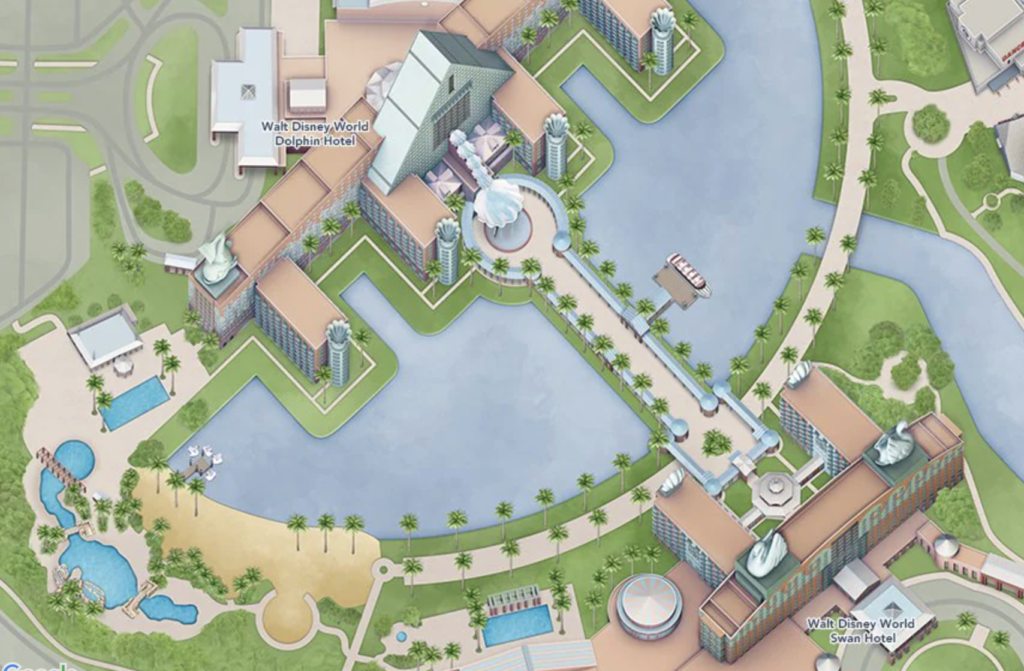
The Legends
Even today, the Walt Disney World Swan and Dolphin are among the most recognizable Disney Hotels… but they aren’t really Disney’s. (They’re still owned by Tishman on a 99-year lease and operated by Marriott. The Swan is part of Marriott’s Westin brand, while the Dolphin is under the Starwood brand.) That’s just the start of the “weirdness” that makes these two on-property resorts in Disney’s “Other Deluxe Resorts” category so captivating…
There are no hotels on Disney property subject to as many rumors, urban legends, and “secrets” as the Walt Disney World Swan & Dolphin… That makes sense. Michael Graves’ ambitious, post-modern design makes these two hotels unlike anything else on property… There’s something hypnotic about a teal pyramid rising over a Crescent Lake; hotels bathed in whimsical patterns and pastels; the artistic interplay of flat swans and not-quite dolphins. The whole thing just begs to conceal a secret or a mystery… So does it?
The Black Box
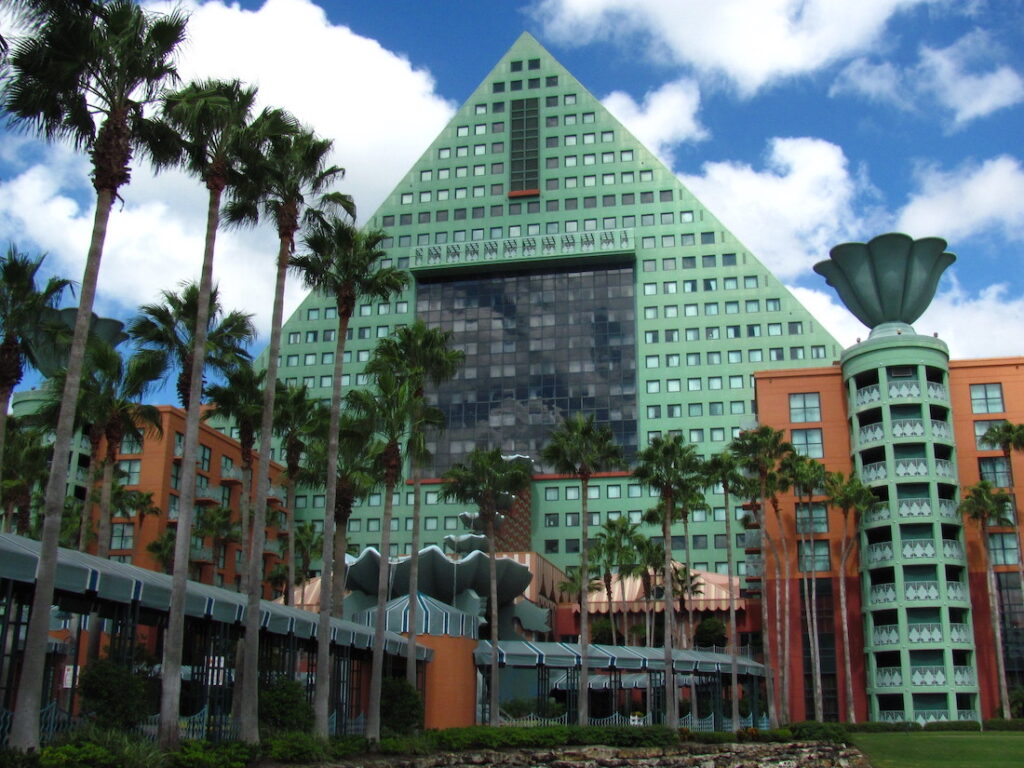
THE LEGEND: The nine-story black square on the face of the Dolphin’s triangular tower doesn’t contain any rooms. It was intentionally left empty so that a future extension of the Monorail could be built through the tower, just like the Contemporary Resort. Disney has added curtains to the windows there to give the illusion of guest rooms, but they never move because that section of the triangle is empty.
STATUS: FALSE. There’s a lot going on in this legend, and none of it is true. The black box serves a narrative purpose (see “The Story” below) but operationally, the rooms in the nine-by-six room rectangle in the Dolphin’s main tower are no different than any other, except that they provide great, central views of the Swan. There are “fake” rooms at the Dolphin though… The windows above the black box don’t have any guest rooms behind them, leaving the top of the “pyramid” empty.
Of course, the black box is far too high up to have a Monorail pass through… it would probably be just right for the Skyliner, though.
The Dimensional Detail
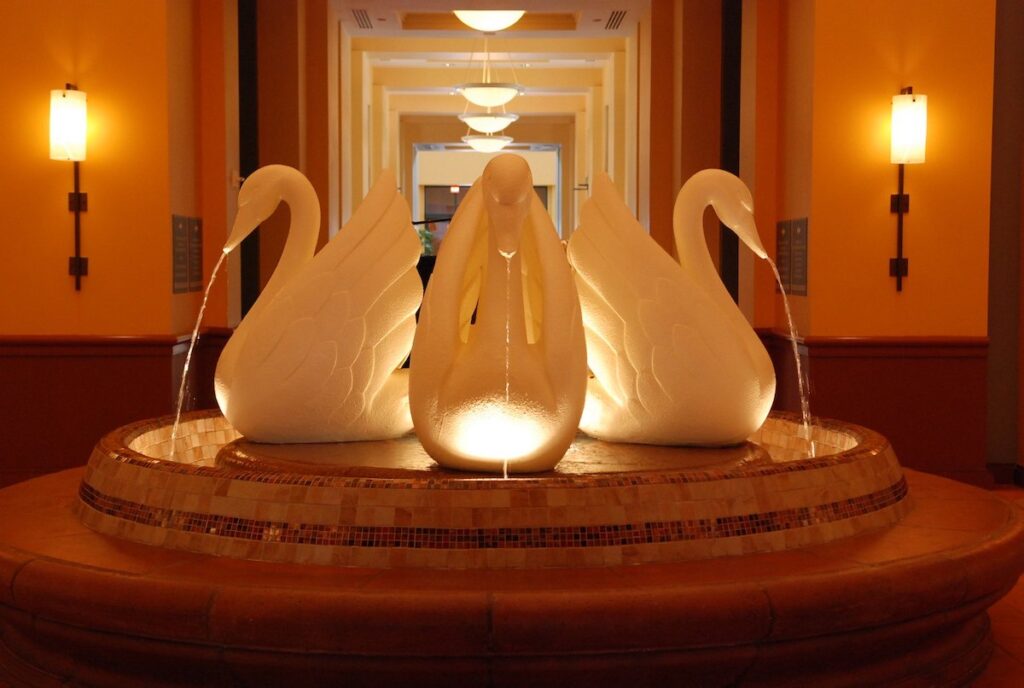
THE LEGEND: There’s a subtle, secretive design rule in play at the Swan and Dolphin… At the Swan, any sculpture that a guest can physically touch is designed as a three-dimensional carving (above), whereas any two-dimensional, flat, cut-out design element is intentionally out of guest’s reach.
The opposite is true at the Dolphin, where touchable sculptures are flat, and untouchable sculptures are three-dimensional (below).
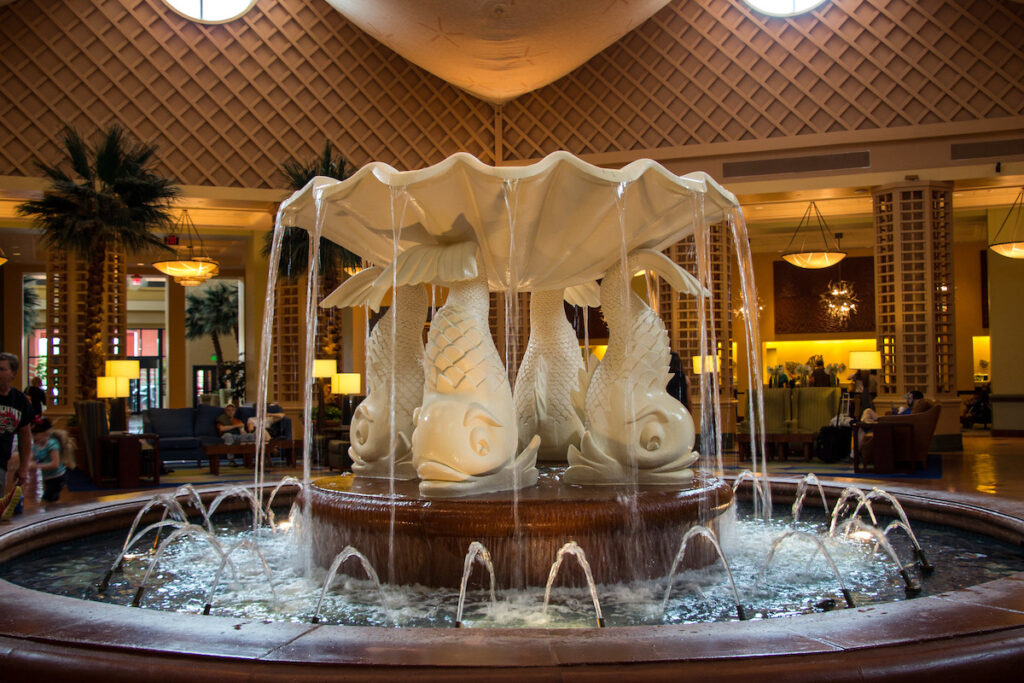
STATUS: TRUE… KINDA! Michael Graves himself confirmed that this mysterious design rule is in effect at the Swan and Dolphin. In fact, the iconic outdoor fountain at the Dolphin initially had three-dimensional Dolphins, but Graves believed that they were too large and overwhelmed the facade. As a result, he had the dolphins turned into 2-D “dolphin filets” and, in keeping with his own rule, made the fountain base smaller so that the new, flat dolphins would be within reach of guests.
The only reason this legend is “True… Kinda” is that many alterations have been made to the Swan and Dolphin in waves of refurbishment, and it wouldn’t be surprising if an exception to the rule snuck through somewhere.
The Swapped Statues
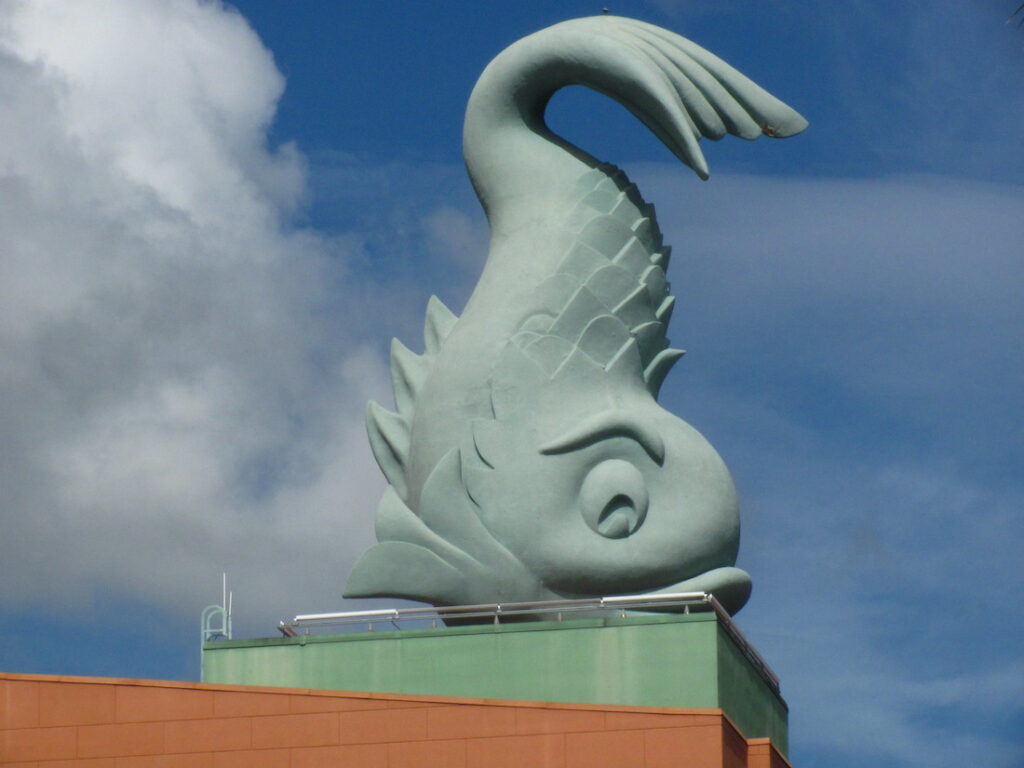
THE LEGEND: During the placement of the 47-foot tall Swans and the 57-foot tall Dolphins, the statues were accidentally transposed by installation crews. The 60,000 pound Swans were installed atop the hotel that was meant to be the Dolphin, and vice versa. Rather than swapping the statues, it was decided to merely swap the hotel names to match the misplaced statues.
STATUS: FALSE. The “evidence” used to explain this rumor is a very interesting one: that you can tell that the Swan and Dolphin were swapped because why else would the Swan be painted with rolling ocean waves and the Dolphin with park-like banana leaves? It’s a good story, and it’s easy to understand why it would spread – especially since the real story isn’t recorded anywhere in Disney’s official publications! But that doesn’t mean it doesn’t exist…!
The Story
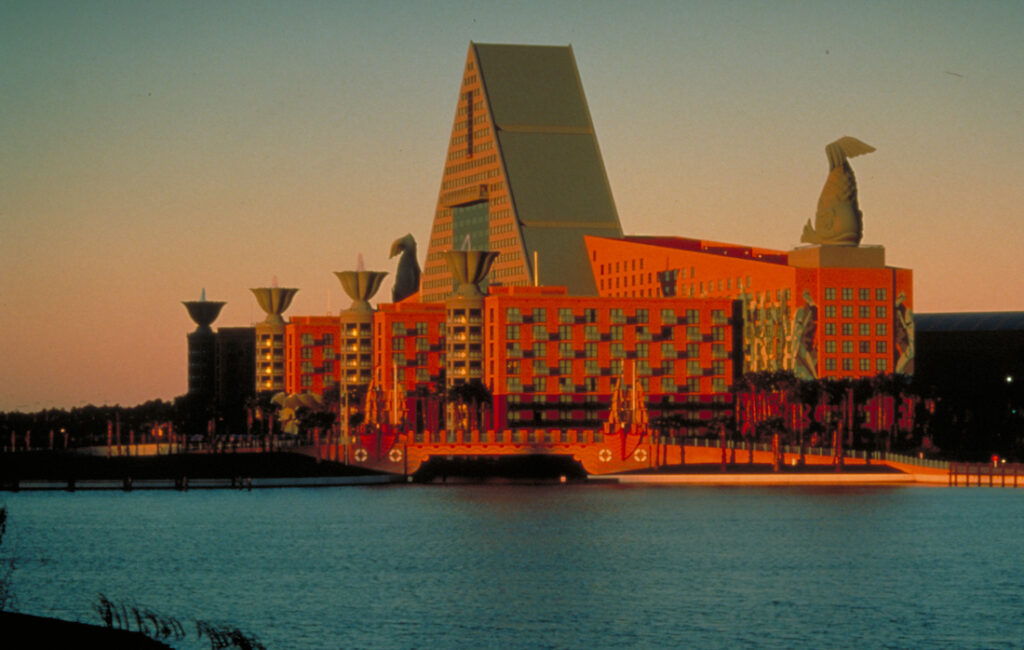
Michael Graves made no secret of his relative dislike for Disney. In a conversation Jim Korkis had with Yesterland, Korkis recalled Graves expressing that “seeing a four-foot mouse walking around in the parks was just ‘wrong’ as far as he was concerned, and that he had no favorite Disney film.” So when it came time to design a hotel for the resort, he was determined to create his own story rather than leaning into existing mythology.
Long ago, the sea bubbled to life. In a single night of cataclysm, boiling water and roiling waves overtook the ocean as steam danced across the sky. When the sun rose, a new landmass had arisen from below – a tranquil island born from the violence of an underwater volcano. That island is the Walt Disney World Dolphin. The entire hotel represents the uplifted earth now covered in foliage (the banana leaves), while the central green tower is the island itself, its heart (the “black box”) burst forth from the violent formation. Water cascades from the island’s heart (via clamshell fountains) while two dolphins were caught in the island’s formation and lifted from the water.
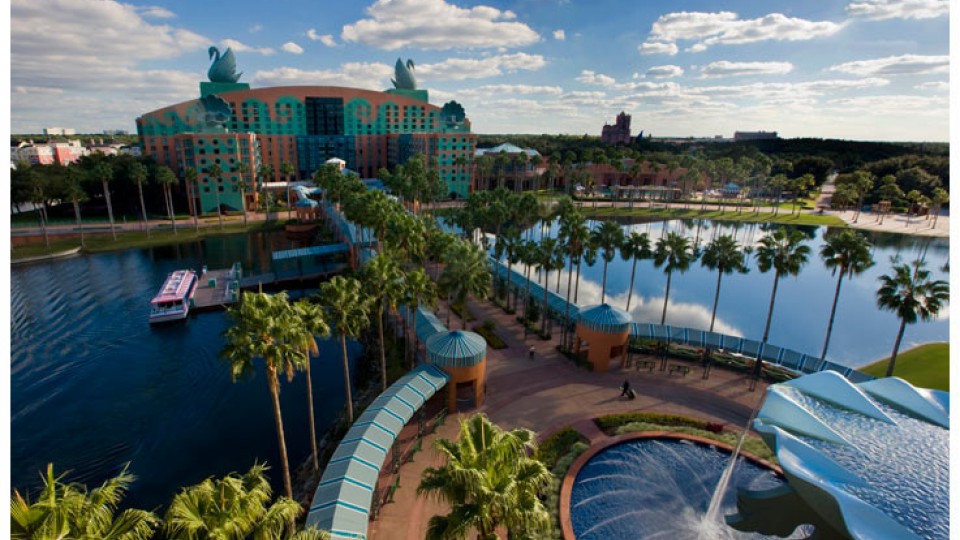
Following the flow of water from the island’s heart, the causeway that connects the Dolphin to the Swan is lined with railings and landscaping that resemble waves, moving outward from the newly formed island. The waves along the Swan’s exterior represent the effects of the Dolphin’s formation, splashing against a rocky island nearby. According to Graves’ story, two birds were so transfixed by the island’s epic appearance, they were caught in its gravity and forever turned to stone.
Obviously unlike, say Port Orleans or Caribbean Beach, the Swan and Dolphin aren’t bringing a literal place to life. They’re abstractions, and likewise, the “backstory” to explain them is more parable than practical. Even so, it only adds to the mystery of these two monumental designs and the legends they inspire…
Two-of-a-Kind
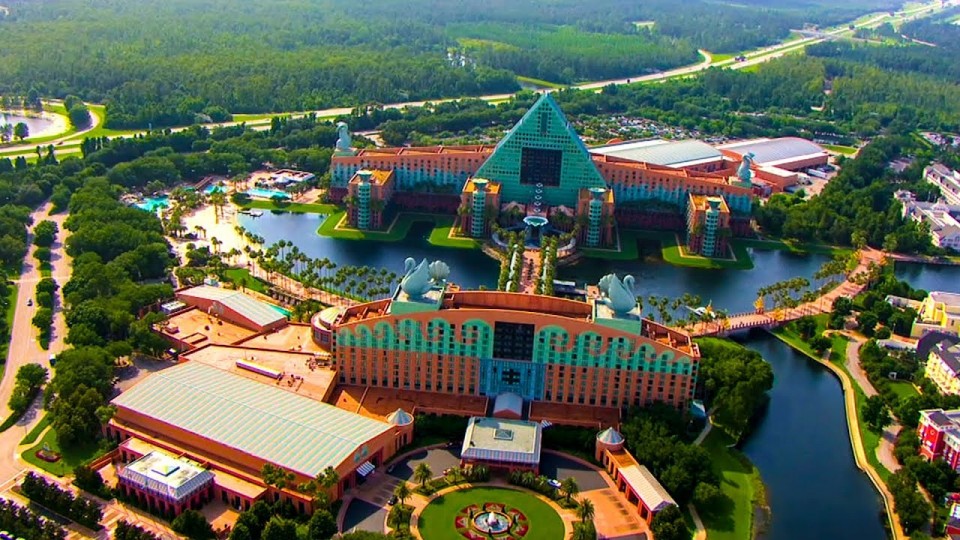
Altogether, the Walt Disney World Swan and the Walt Disney World Dolphin are unique. They were born of a bold, brash mindset held by Michael Eisner at Walt Disney World’s most voraciously ambitious time.
They were designed by the legendary Michael Graves, whose design practically begs to be either loved or hated – a very brave thing to add to Disney World in and of itself.
And because the Swan and Dolphin are so different from anything else at the resort, they’ve become true landmarks, bolstered by legends and stories – some of which are true! – that add to the mystery and draw of two very, very strange sister resorts. They’re unusual. And that in and of itself makes them vastly different from anything Disney would attempt to build today – and that alone is worth celebrating.


